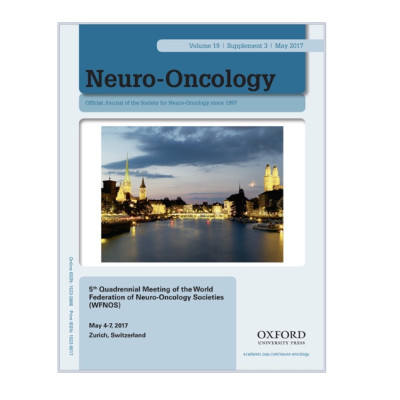Publication
The prognostic value of systemic inflammatory indices in recurrent Glioma treated with bevacizumab
A. Martínez-González, C. González Díaz, R. Cabrera, M. Lloret Sáez-Bravo, P. C. Lara
Neuro-Oncology 19(suppl_3):iii76-iii77 (2017)
MOLAB authors
Abstract
Introduction: Although standard therapies improve Gliomas prognosis, these tumors tend to progress to worse histological grades. It is not clear what is the best therapeutic option for recurrent Glioma patients who have already received the standard radio- and chemotherapy. Bevacizumab (BVZ) is typically administrated in progression even when results are not encouraging. Apparently only some patients benefit and it would be useful to find biomarkers that determine them beforehand. Materials and methods: 31 high risk progressing Glioma patients after Stupp treatment were included in a protocol of BVZ 5-10?mg/kg every 14 days and Temozolomide (3-19 cycles, 150-200?mg 5 days each 28-day cycle) during a mean of 8 cycles of BVZ or until tumor progression or unacceptable toxicity. We analysed the prognostic values of inflammatory indexes measured before BVZ administration: (i) neutrophil, lymphocyte and platelet counts, (ii) the Neutrophil-to-lymphocyte ratio (NLR) and Platelet-to-lymphocyte ratio (PLR), and (iii) the combined ratios of Platelets-to-lymphocyte and Neutrophil-to-lymphocyte (COPLR-NLR). We developed univariate Cox and Kaplan-Meier analysis (K-M) and the ROC curve for detecting survival using independent predictor variables. Results: Lymphocytes level before BVZ administration was the best independent predictor of overall survival (HR=0.34, 95% CI 0.145-0.81, p=0.015). The area under the ROC curve was 0.823 and the optimal cut off value for sensitivity and specificity (0.80, 0.85 respectively) was 1.645 103 cell/?m. K-M curves were significantly different considering the optimal cut off, the 1st tertile and 2nd tertile as cut off points. The number of BVZ cycles were not related to lymphopenia. Neutrophil and platelet counts, PLR and NLR ratios had not prognostic value. Inflammatory variables were not correlated between them. However, patients with high NLR and PLR simultaneously (double-positive patients for COPLR-NLR) had worse prognosis compared to the rest (p=0.043). Conclusions: Lymphocytes level could be used as non-invasive haematological markers for the prediction of survival in recurrent Gliomas treated with BVZ. A close relationship emerged between inflammation and angiogenesis although a deeper study would be necessary.















